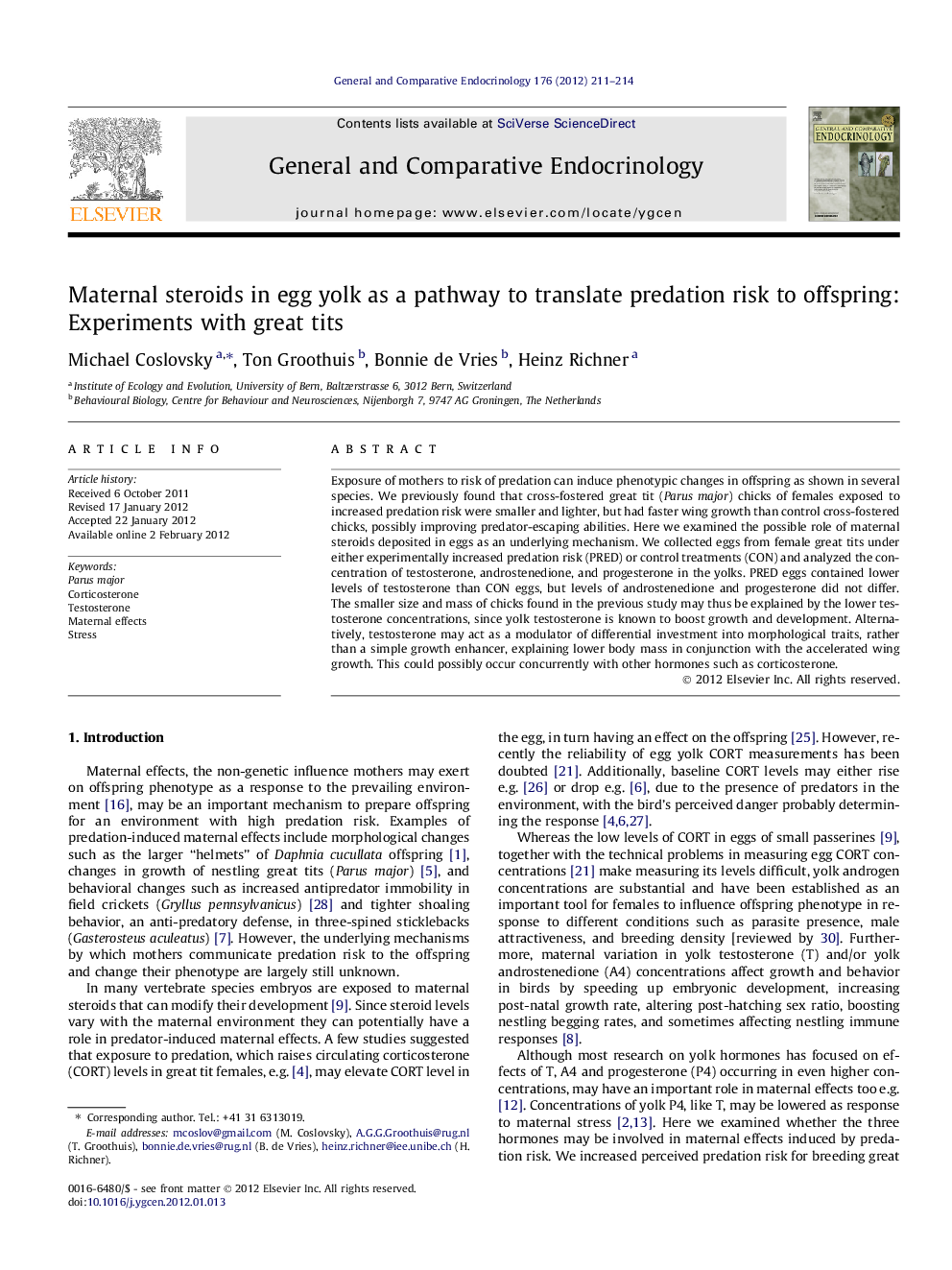| Article ID | Journal | Published Year | Pages | File Type |
|---|---|---|---|---|
| 2800722 | General and Comparative Endocrinology | 2012 | 4 Pages |
Exposure of mothers to risk of predation can induce phenotypic changes in offspring as shown in several species. We previously found that cross-fostered great tit (Parus major) chicks of females exposed to increased predation risk were smaller and lighter, but had faster wing growth than control cross-fostered chicks, possibly improving predator-escaping abilities. Here we examined the possible role of maternal steroids deposited in eggs as an underlying mechanism. We collected eggs from female great tits under either experimentally increased predation risk (PRED) or control treatments (CON) and analyzed the concentration of testosterone, androstenedione, and progesterone in the yolks. PRED eggs contained lower levels of testosterone than CON eggs, but levels of androstenedione and progesterone did not differ. The smaller size and mass of chicks found in the previous study may thus be explained by the lower testosterone concentrations, since yolk testosterone is known to boost growth and development. Alternatively, testosterone may act as a modulator of differential investment into morphological traits, rather than a simple growth enhancer, explaining lower body mass in conjunction with the accelerated wing growth. This could possibly occur concurrently with other hormones such as corticosterone.
► Yolk steroids may be a mechanism behind predator induced maternal effects. ► Testosterone levels were lower in eggs of passerine birds exposed to predation risk. ► Coupling with previous results suggests new view of testosterone’s role in growth. ► Testosterone may modulate investment to morphological traits rather than boost them.
